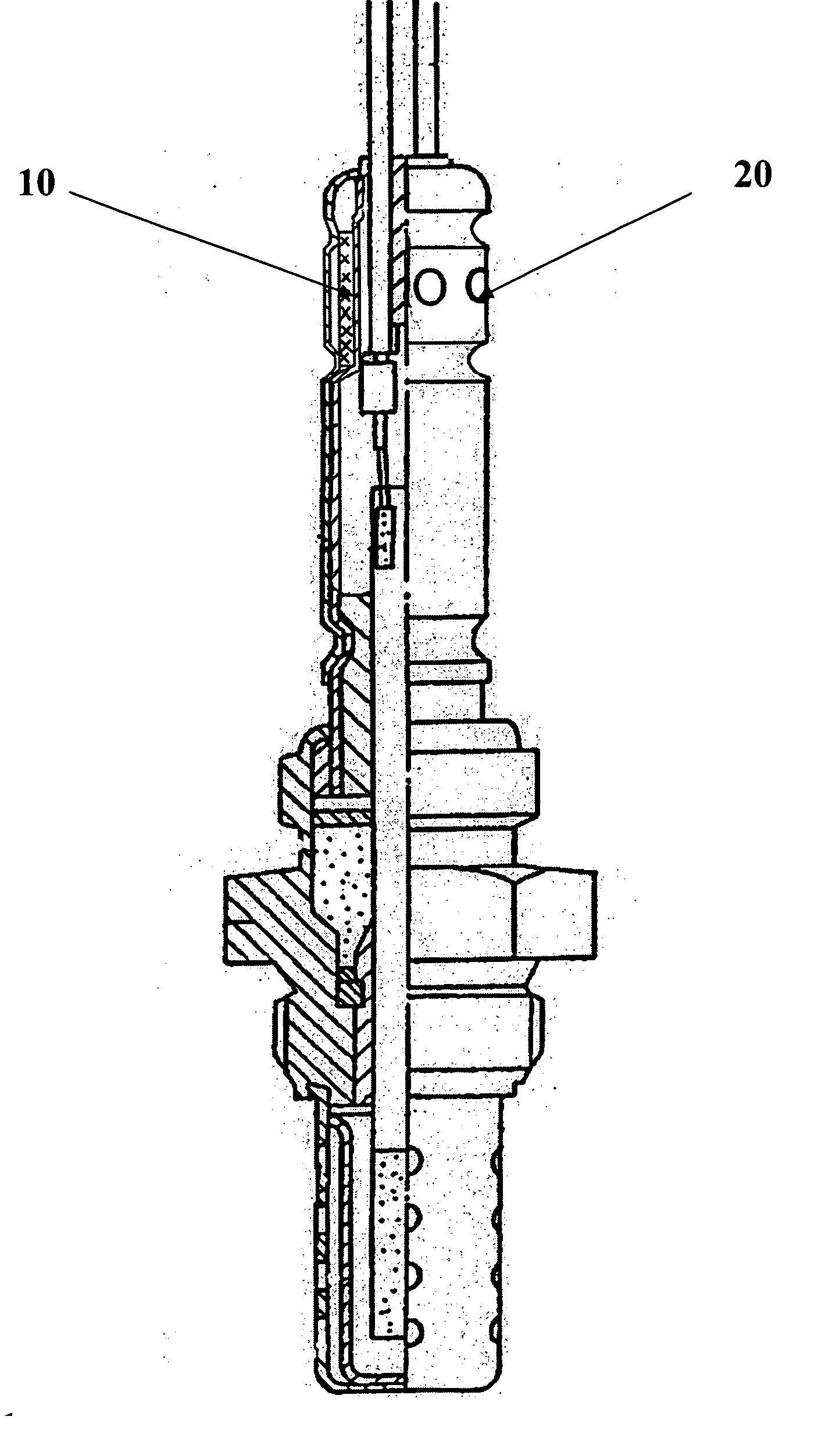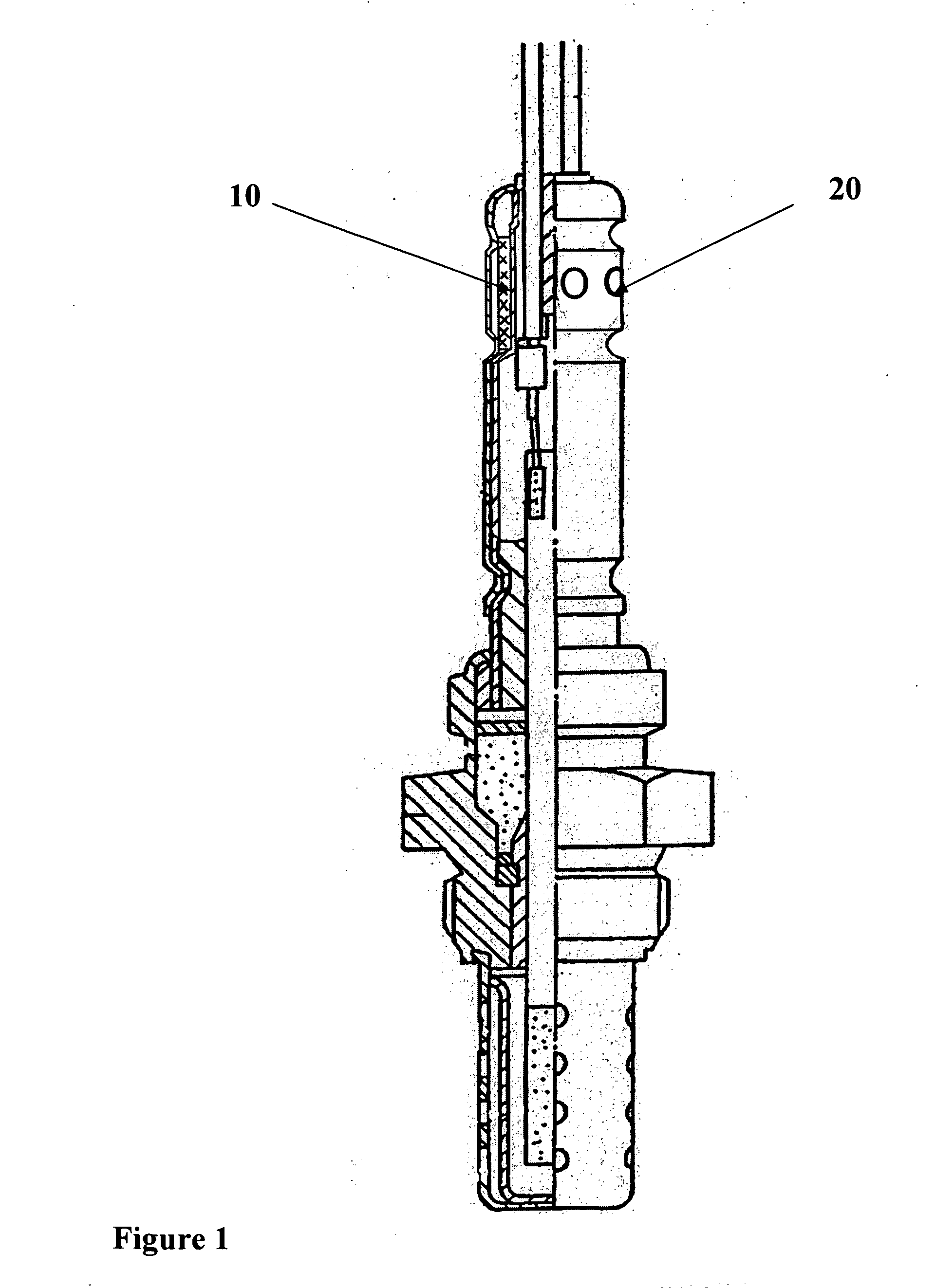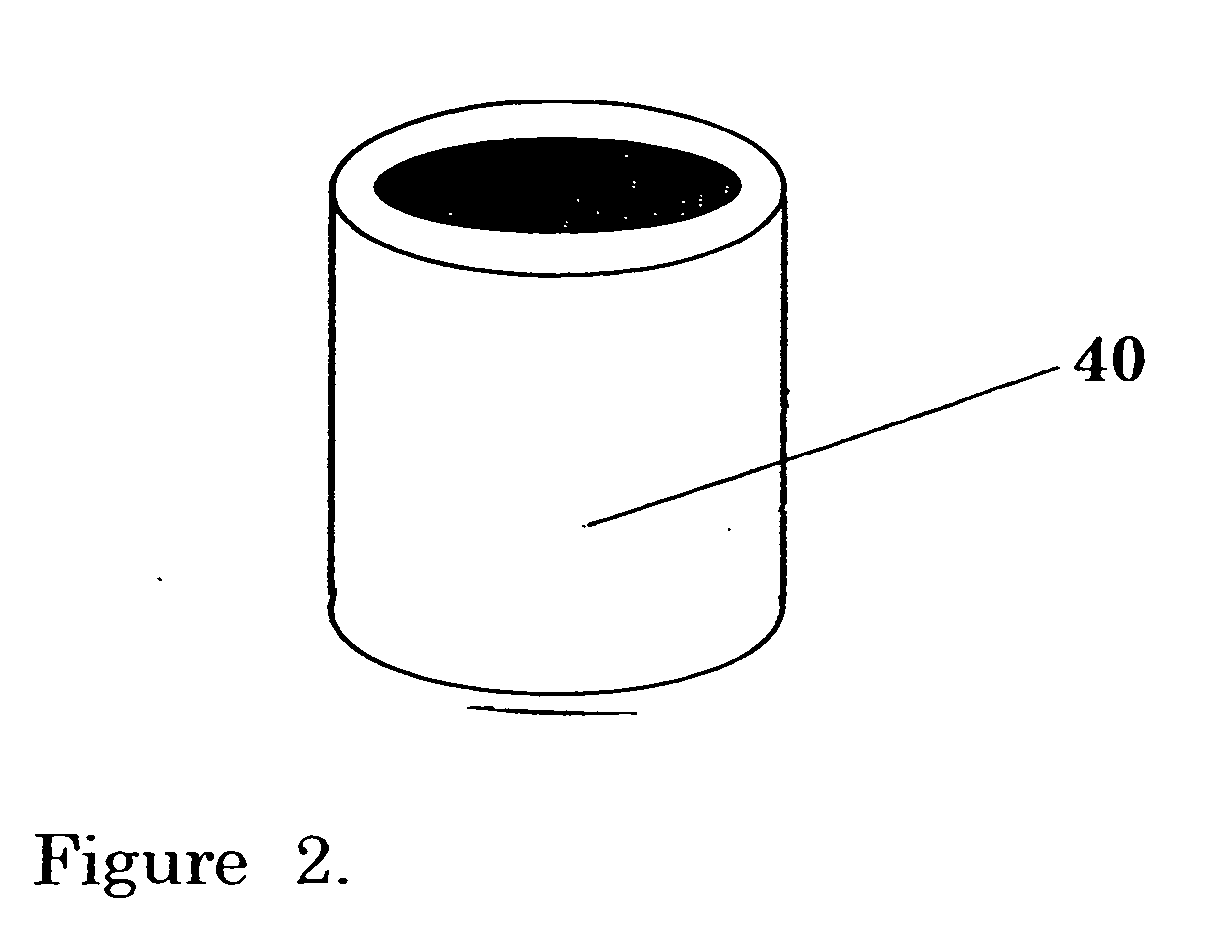High temperature oleophobic materials
a technology of oleophobic materials and high temperature, applied in the field of materials, can solve the problems of reducing gas flow through, affecting the safety of users, so as to prevent the blockage of pores, maintain protective properties, and reduce the exposure of the sensor
- Summary
- Abstract
- Description
- Claims
- Application Information
AI Technical Summary
Benefits of technology
Problems solved by technology
Method used
Image
Examples
example 2
[0043] Porous PTFE tubes were coated with a solution of tetrafluoroethylene / perfluoromethyl vinyl ether (TFE / PMVE) polymer.
[0044] A TFE / PMVE polymer having about 60% by weight PMVE and about 40% by weight TFE was prepared by an emulsion polymerization reaction; the resulting polymer from the emulsion was coagulated and purified. A coating solution was prepared by dissolving approximately 1.0 gram of ground, powdered TFE / PMVE polymer into about 200 grams in FLUORINERT® FC-75 obtained from the 3M Company (St. Paul, Minn.). The solution was heated to about 80° C. for about two hours to dissolve the polymer.
[0045] Expanded PTFE tubes according to Example 1 were cut in 10 mm lengths and dipped into the coating solution for about one minute. The samples were removed and dried in air. The samples were tested and the results were reported in the tables below.
example 3
[0046] Porous PTFE tubes were coated with a solution of perfluoromethyl vinyl ether / tetrafluoroethylene (TFE / PMVE) polymer.
[0047] A 0.25 weight % coating solution was prepared by dissolving ground, powdered TFE / PMVE polymer prepared as described in Example 2, in FLUORINERT® FC-75 obtained from the 3M Company (St. Paul, Minn.). The solution was heated to about 80° C. for about two hours to dissolve the polymer.
[0048] Expanded PTFE tubes according to Example 1 were cut in 10 mm lengths and dipped into the coating solution for about one minute. The samples were removed and dried in air. The samples were tested, the results of which were reported in the tables below.
example 4
[0049] Porous PTFE tubes were coated with a solution of perfluoromethyl vinyl ether / tetrafluoroethylene (TFE / PMVE) polymer.
[0050] A 1.0 weight % coating solution was prepared by dissolving ground, powdered TFE / PMVE polymer prepared as described in Example 2, in FLUORINERT® FC-75 obtained from the 3M Company (St. Paul, Minn.). The solution was heated to about 80° C. for about two hours to dissolve the polymer.
[0051] Expanded PTFE tubes according to Example 1 were cut in 10 mm lengths and dipped into the coating solution for about one minute. The samples were removed and dried in air. The samples were tested, the results of which may be found in the tables below.
PUM
| Property | Measurement | Unit |
|---|---|---|
| temperature | aaaaa | aaaaa |
| weight percent | aaaaa | aaaaa |
| weight percent | aaaaa | aaaaa |
Abstract
Description
Claims
Application Information
 Login to View More
Login to View More - R&D
- Intellectual Property
- Life Sciences
- Materials
- Tech Scout
- Unparalleled Data Quality
- Higher Quality Content
- 60% Fewer Hallucinations
Browse by: Latest US Patents, China's latest patents, Technical Efficacy Thesaurus, Application Domain, Technology Topic, Popular Technical Reports.
© 2025 PatSnap. All rights reserved.Legal|Privacy policy|Modern Slavery Act Transparency Statement|Sitemap|About US| Contact US: help@patsnap.com



